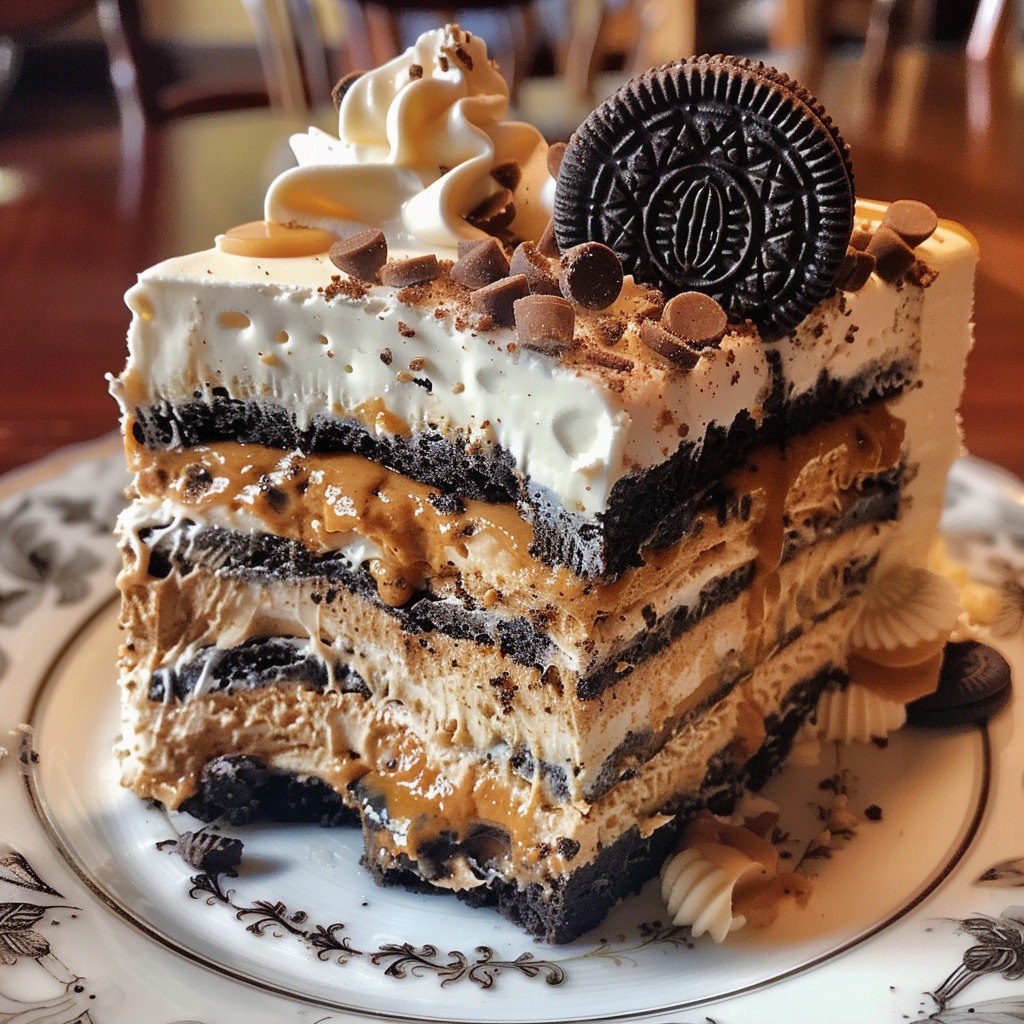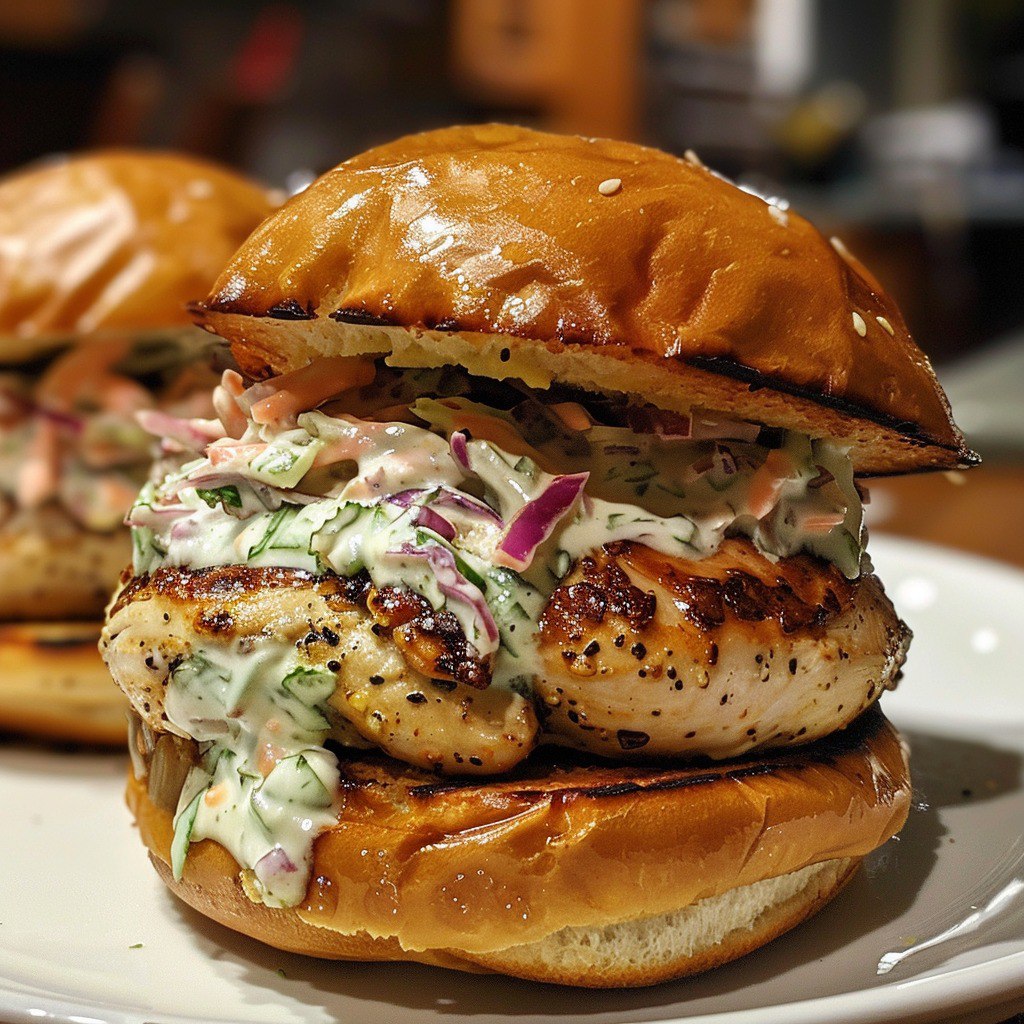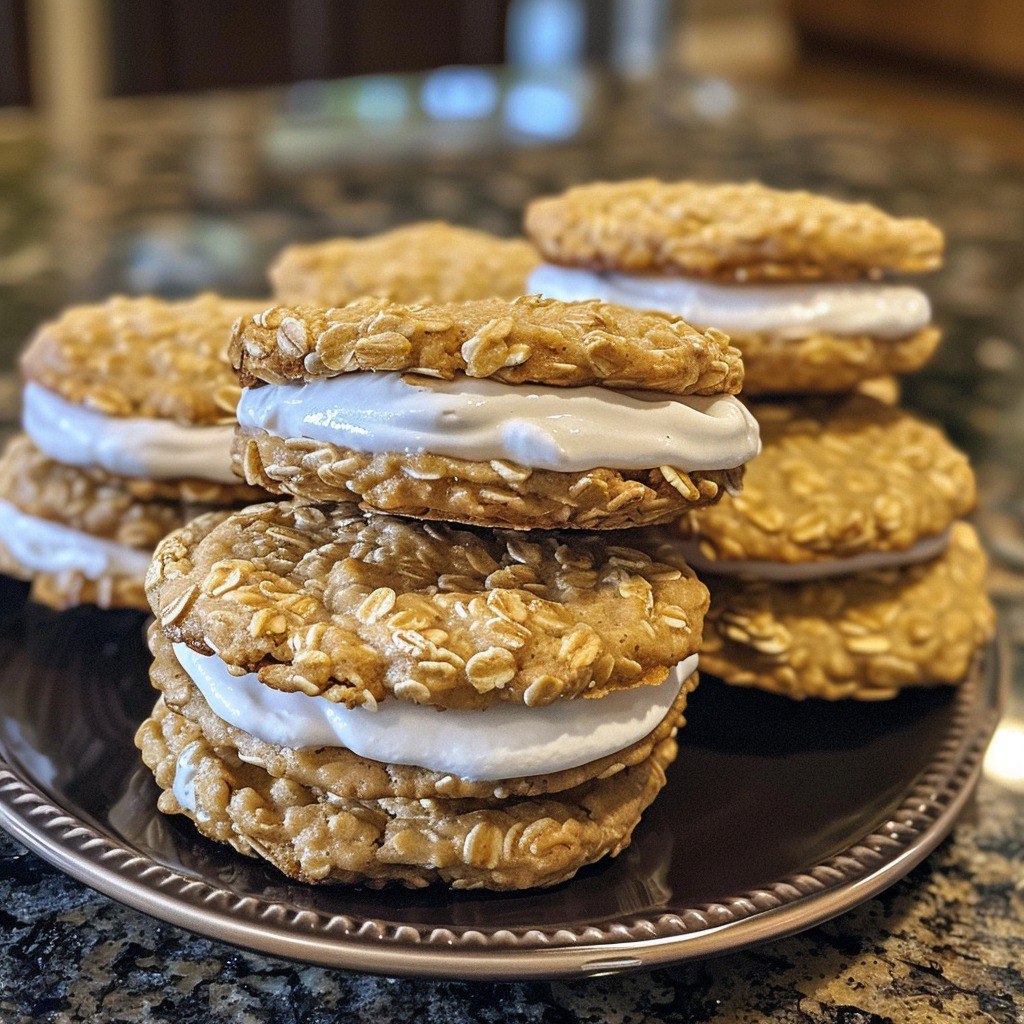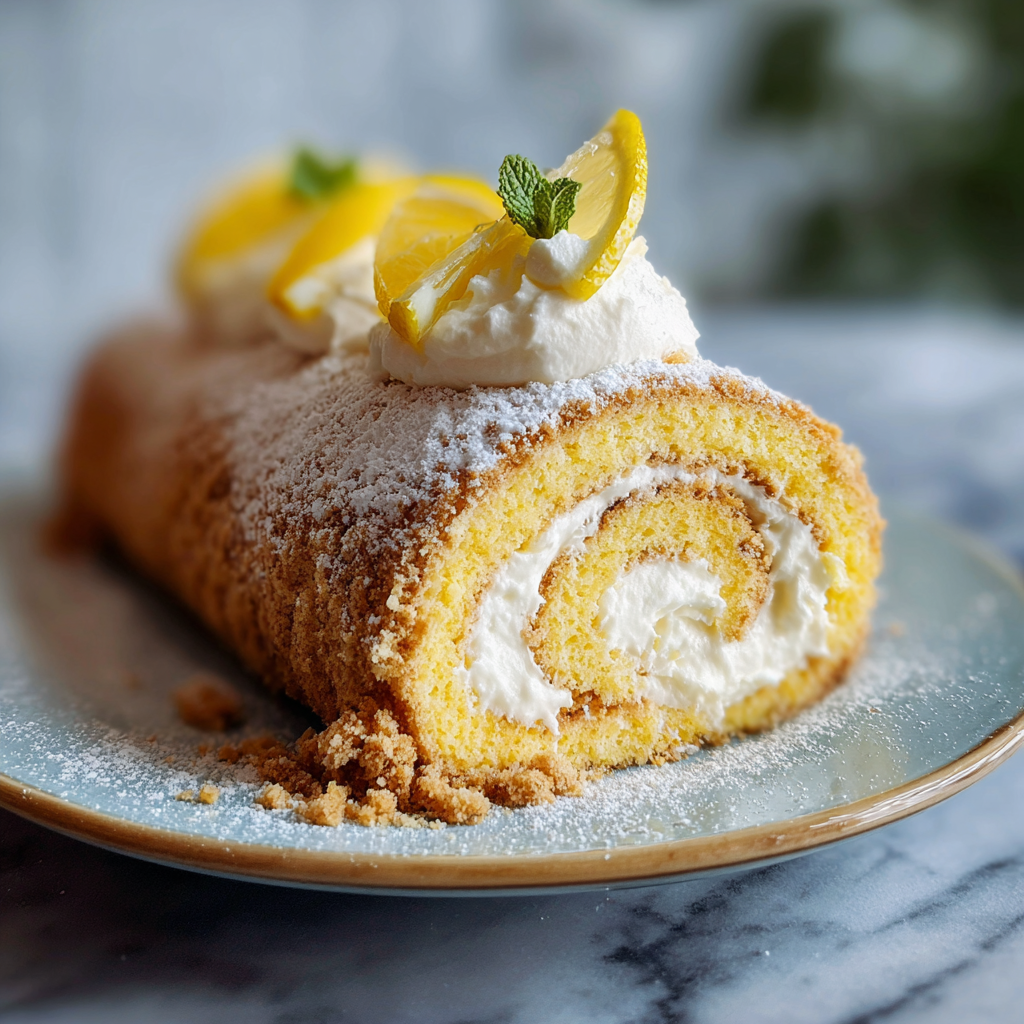Have you ever wondered how to capture the essence of a tropical paradise on your dinner plate? Hawaiian style teriyaki chicken delivers exactly that experience, combining the sweet-savory flavors of traditional teriyaki with vibrant island ingredients. This beloved dish transforms ordinary chicken into an extraordinary culinary journey that transports your taste buds straight to the shores of Hawaii.
Originally inspired by Japanese immigrants who settled in Hawaii during the 19th century, this fusion creation perfectly represents the multicultural spirit of the islands. Moreover, the combination of tender chicken, caramelized pineapple, and colorful bell peppers creates a visually stunning dish that tastes even better than it looks. Furthermore, the homemade teriyaki marinade infuses every bite with layers of complex flavors that commercial sauces simply cannot match.
Whether you’re planning a summer barbecue, seeking a weeknight dinner solution, or dreaming of tropical flavors during cold winter months, this Hawaiian style teriyaki chicken recipe provides the perfect escape. Additionally, its balanced nutrition profile makes it an excellent choice for health-conscious families who refuse to compromise on flavor.
Why Hawaiian Style Teriyaki Chicken Will Transform Your Cooking
This exceptional Hawaiian teriyaki chicken recipe offers numerous compelling benefits that make it an essential addition to your culinary repertoire. Here’s why this tropical-inspired dish consistently impresses home cooks and dinner guests alike:
• Incredible flavor complexity: Sweet pineapple balances savory soy sauce while fresh ginger adds aromatic depth • Nutritional powerhouse: High-quality protein combined with vitamin-rich vegetables and antioxidant-packed pineapple • Impressive presentation: Colorful ingredients create restaurant-quality visual appeal • Versatile cooking methods: Equally delicious grilled, pan-seared, or baked • Make-ahead friendly: Marinating improves flavors and simplifies meal preparation • Budget-conscious: Uses affordable, readily available ingredients • Crowd-pleasing appeal: Satisfies both adults and children with its balanced sweet-savory profile • Customizable base: Easy to adapt for dietary restrictions or personal preferences
Additionally, this recipe provides an excellent introduction to Hawaiian cuisine without requiring specialty ingredients or advanced cooking techniques. The combination of familiar flavors presented in an exciting new way makes it perfect for adventurous home cooks.
Essential Ingredients for Perfect Hawaiian Style Teriyaki Chicken
Creating authentic Hawaiian style teriyaki chicken requires understanding how each ingredient contributes to the final masterpiece. Therefore, selecting quality components and preparing them properly ensures restaurant-quality results every time.
Premium Protein Selection
Boneless, skinless chicken breasts form the foundation of this tropical dish. However, choosing the right chicken makes a significant difference in texture and flavor. Look for organic, free-range chicken when possible, as it offers superior taste and more tender texture. Moreover, uniform thickness ensures even cooking, so consider pounding thicker pieces to achieve consistent results.
Alternatively, chicken thighs provide more flavor and remain juicier during cooking. Furthermore, thighs are more forgiving if slightly overcooked, making them ideal for beginner cooks. The higher fat content also helps carry the teriyaki flavors more effectively throughout the meat.
Tropical Fruit Components
Fresh pineapple juice creates the sweet foundation of the teriyaki marinade while providing natural enzymes that tenderize the chicken. Additionally, the acidity helps balance the rich soy sauce flavors. Choose 100% pure pineapple juice without added sugars for the most authentic taste.
Pineapple chunks add textural interest and concentrated sweetness that caramelizes beautifully during cooking. Fresh pineapple provides the best flavor and texture, though high-quality canned pineapple works well when fresh isn’t available. Moreover, the natural sugars in pineapple help create the characteristic glaze that makes this dish so visually appealing.
Aromatic Flavor Builders
Fresh ginger contributes warm, spicy notes that complement the sweet pineapple perfectly. Always use fresh ginger rather than dried, as it provides brighter flavor and better integrates with the liquid marinade. Furthermore, grating ginger releases more oils and creates better distribution throughout the sauce.
Garlic adds savory depth and aromatic complexity that rounds out the flavor profile. Fresh garlic cloves provide the most vibrant taste, though high-quality garlic paste can substitute when convenience is paramount. Additionally, mincing garlic finely ensures even distribution and prevents overwhelming any single bite.
Colorful Vegetable Medley
Bell peppers contribute crisp texture, vibrant color, and sweet vegetable flavors that complement the tropical theme. Red and green peppers provide visual contrast while offering slightly different flavor profiles. Moreover, their natural sugars caramelize during cooking, adding another layer of sweetness to the dish.
Onions provide savory foundation flavors that balance the sweetness of pineapple and brown sugar. Yellow onions work best for their mild flavor and excellent caramelization properties. Furthermore, cutting onions into appropriately sized chunks ensures they cook evenly with the other vegetables.
Sauce Foundation Elements
Soy sauce provides the essential umami foundation that defines teriyaki flavor. Low-sodium soy sauce offers better control over salt levels while still delivering authentic taste. Additionally, higher-quality soy sauce contributes more complex flavors than generic brands.
Brown sugar adds necessary sweetness and helps create the characteristic glossy glaze. Moreover, brown sugar’s molasses content provides deeper flavor than white sugar. Furthermore, it caramelizes beautifully during cooking, creating the signature teriyaki appearance.
Comprehensive Guide to Making Hawaiian Style Teriyaki Chicken
Step 1: Marinade Preparation and Flavor Development
Begin by creating the teriyaki marinade that will infuse your chicken with authentic Hawaiian flavors. In a medium mixing bowl, combine one cup of pineapple juice with half a cup of soy sauce, creating the sweet-savory foundation. Next, add one-quarter cup of brown sugar, whisking until completely dissolved.
Incorporate two minced garlic cloves and one teaspoon of freshly grated ginger, ensuring even distribution throughout the liquid. Additionally, add half a teaspoon of black pepper to provide subtle heat that complements the tropical flavors. Whisk all ingredients thoroughly until the mixture is completely uniform and the brown sugar has dissolved entirely.
Taste the marinade and adjust seasoning as needed. The flavor should balance sweet and salty elements while maintaining bright acidity from the pineapple juice. Furthermore, the marinade should taste slightly more intense than desired, as it will mellow during the marinating process.
Step 2: Chicken Preparation and Marinating Process
Prepare your chicken breasts by trimming any excess fat and ensuring uniform thickness. If pieces vary significantly in size, use a meat mallet to pound them to consistent thickness. This step ensures even cooking and prevents some pieces from overcooking while others remain underdone.
Place the prepared chicken in a resealable plastic bag or shallow glass dish. Pour approximately half of the prepared marinade over the chicken, reserving the remainder for cooking the vegetables later. Furthermore, ensure all chicken pieces are completely coated with marinade for maximum flavor penetration.
Seal the bag or cover the dish tightly and refrigerate for at least 30 minutes. However, for optimal flavor development, marinate for 2-4 hours. Additionally, longer marinating times allow the pineapple enzymes to tenderize the meat while the flavors penetrate deeper into the chicken.
Step 3: Proper Cooking Technique for Perfect Results
Remove the marinated chicken from the refrigerator 15-20 minutes before cooking to allow it to reach room temperature. This step ensures more even cooking and prevents the exterior from overcooking while the interior remains cold. Meanwhile, heat two tablespoons of vegetable oil in a large skillet or grill pan over medium-high heat.
Remove chicken from the marinade, allowing excess to drip off. Discard the used marinade to prevent cross-contamination. Cook the chicken for 6-7 minutes per side, or until the internal temperature reaches 165°F (75°C). Moreover, avoid moving the chicken too frequently to achieve proper browning and caramelization.
Once cooked, transfer the chicken to a clean plate and tent with foil to rest. This resting period allows juices to redistribute throughout the meat, ensuring maximum tenderness and flavor. Furthermore, the residual heat will finish cooking the chicken to perfect doneness.
Step 4: Vegetable Preparation and Caramelization
Using the same skillet (do not clean it, as the browned bits add flavor), add the pineapple chunks, bell pepper pieces, and onion chunks. The residual heat and chicken drippings will enhance the vegetable flavors significantly. Cook the vegetables for 4-5 minutes, stirring occasionally to ensure even browning.
The vegetables should become tender while maintaining slight crispness for textural interest. Additionally, look for light caramelization on the pineapple pieces, which indicates proper cooking and flavor development. Moreover, the bell peppers should show slight charring for optimal flavor.
Step 5: Sauce Reduction and Final Assembly
Pour the reserved teriyaki marinade into the skillet with the cooked vegetables. Bring the mixture to a rolling boil, then reduce heat to medium-low and simmer for 2-3 minutes. This process concentrates the flavors while creating a glossy, slightly thickened sauce that coats the ingredients beautifully.
Slice the rested chicken into diagonal strips and return to the skillet. Gently toss the chicken with the vegetables and sauce, ensuring even coating. Furthermore, cook for an additional 1-2 minutes to heat the chicken through and allow the flavors to meld completely.
Professional Techniques for Restaurant-Quality Hawaiian Teriyaki Chicken
Temperature Control Mastery
Achieving perfect Hawaiian style teriyaki chicken requires precise temperature management throughout the cooking process. Use a reliable instant-read thermometer to ensure chicken reaches the safe internal temperature of 165°F (75°C). Moreover, cooking at medium-high heat allows proper browning without burning the sugars in the marinade.
Additionally, maintaining consistent heat prevents the teriyaki sauce from burning while ensuring the chicken cooks evenly. If your stovetop runs hot, reduce the heat slightly and extend cooking time rather than risk burning the natural sugars in the pineapple and brown sugar.
Marinating Science and Timing
Understanding the science behind marinating improves your results significantly. The enzymes in pineapple juice break down protein fibers, creating more tender meat. However, excessive marinating (over 24 hours) can result in mushy texture. Therefore, aim for 2-4 hours for optimal results.
Furthermore, marinating in the refrigerator prevents bacterial growth while allowing flavors to develop slowly. The acid in the pineapple juice also helps the chicken absorb the marinade more effectively than purely oil-based marinades.
Achieving Perfect Caramelization
Proper caramelization creates the signature appearance and flavor of Hawaiian teriyaki chicken. Allow the chicken to develop a golden-brown crust before flipping, as this browning adds significant flavor depth. Moreover, the same principle applies to the vegetables and pineapple chunks.
The natural sugars in the marinade and pineapple should caramelize without burning. If you notice excessive browning, reduce heat slightly and continue cooking. Additionally, the final sauce reduction should create a glossy, slightly sticky coating that clings to the chicken and vegetables.

Creative Variations of Hawaiian Style Teriyaki Chicken
Protein Alternatives and Modifications
While chicken breast remains the classic choice, numerous protein variations can create exciting new interpretations of Hawaiian teriyaki chicken. Chicken thighs provide richer flavor and more forgiving cooking characteristics. Furthermore, their higher fat content carries the teriyaki flavors exceptionally well.
Pork tenderloin offers an excellent alternative that pairs beautifully with the tropical flavors. Additionally, firm fish like mahi-mahi or salmon creates a lighter version that still captures the essence of Hawaiian cuisine. Moreover, these alternatives provide variety for households with different protein preferences.
For vegetarian options, extra-firm tofu or tempeh absorbs the marinade effectively while providing satisfying protein content. Furthermore, these plant-based proteins work particularly well with the sweet-savory flavor profile of the teriyaki sauce.
Seasonal Fruit Adaptations
Expanding beyond traditional pineapple creates exciting seasonal variations of Hawaiian style teriyaki chicken. Fresh mango chunks provide tropical sweetness with a different flavor profile during summer months. Moreover, mango’s creamy texture creates interesting textural contrast.
Papaya offers another tropical option that caramelizes beautifully and provides unique flavor notes. Additionally, stone fruits like peaches or nectarines can create mainland adaptations that still capture the essence of the original dish. Furthermore, these variations allow you to take advantage of seasonal fruit availability and pricing.
Spice Level Customizations
Traditional Hawaiian teriyaki chicken features mild heat, but numerous spice additions can create more complex flavor profiles. Fresh jalapeños or serrano peppers add heat without overwhelming the tropical flavors. Moreover, red pepper flakes provide controllable heat that diners can adjust to their preferences.
Sriracha or sambal oelek stirred into the marinade creates Asian-inspired heat that complements the existing flavors. Additionally, fresh ginger can be increased for more warming spice rather than sharp heat. Furthermore, these modifications allow customization for different heat tolerance levels.
Nutritional Benefits and Health Considerations
Protein Quality and Muscle Health
Hawaiian style teriyaki chicken provides exceptional high-quality protein essential for muscle maintenance and growth. Chicken breast contains all essential amino acids in optimal ratios for human nutrition. Moreover, the lean protein supports healthy weight management while providing sustained energy.
Additionally, the protein content helps regulate blood sugar levels when combined with the natural fruit sugars in the dish. Furthermore, adequate protein intake supports immune function and helps maintain healthy skin, hair, and nails.
Antioxidant-Rich Ingredients
The pineapple in Hawaiian teriyaki chicken provides significant vitamin C content along with powerful antioxidants like bromelain. These compounds support immune function and may help reduce inflammation. Moreover, the bell peppers contribute additional vitamin C along with beta-carotene for eye health.
Fresh ginger provides gingerol, a potent anti-inflammatory compound that may help with digestion and nausea reduction. Additionally, garlic contributes allicin, which has antimicrobial properties and may support cardiovascular health.
Balanced Macronutrient Profile
This dish provides an excellent balance of macronutrients when served with brown rice or quinoa. The combination of lean protein, complex carbohydrates, and healthy fats creates sustained energy release. Furthermore, the natural fruit sugars provide quick energy while the protein ensures lasting satisfaction.
Additionally, the vegetable content contributes fiber for digestive health and helps increase the overall nutrient density of the meal. Moreover, the balanced macronutrient profile makes this dish suitable for various dietary approaches and health goals.
Common Mistakes to Avoid When Making Hawaiian Teriyaki Chicken
Marinating Errors and Solutions
One of the most frequent mistakes involves improper marinating techniques that compromise the final result. Over-marinating chicken in acidic pineapple juice can create mushy texture rather than tender meat. Therefore, limit marinating time to 2-4 hours for optimal results.
Additionally, failing to reserve clean marinade for cooking vegetables forces cooks to use contaminated marinade or skip the sauce entirely. Always divide the marinade before adding raw chicken to ensure food safety. Furthermore, bringing marinated chicken to room temperature before cooking ensures even cooking throughout.
Temperature and Timing Problems
Cooking Hawaiian style teriyaki chicken at excessive heat causes the sugars in the marinade to burn before the chicken cooks through. This creates bitter flavors and unappealing appearance. Therefore, maintain medium-high heat and monitor the browning carefully.
Additionally, not allowing the chicken to rest after cooking results in dry meat as juices escape when sliced immediately. Furthermore, overcooking chicken breast creates tough, dry texture that even the best sauce cannot salvage. Always use a thermometer to ensure proper doneness without overcooking.
Sauce Consistency Issues
Many home cooks struggle with achieving the proper sauce consistency for Hawaiian teriyaki chicken. Adding the reserved marinade to the vegetables too early can result in watery sauce that doesn’t coat properly. Therefore, cook vegetables first, then add marinade and reduce to proper consistency.
Additionally, failing to reduce the sauce adequately results in thin, watery coating that slides off the chicken and vegetables. Furthermore, reducing the sauce too much creates overly thick, sticky coating that overwhelms the other flavors. Aim for a glossy consistency that coats the back of a spoon lightly.
Serving Suggestions and Presentation Ideas
Traditional Hawaiian Accompaniments
Serve Hawaiian style teriyaki chicken over fluffy jasmine rice or brown rice to absorb the delicious sauce. The rice provides a neutral base that allows the complex flavors to shine while adding satisfying bulk to the meal. Moreover, the rice helps balance the sweetness of the teriyaki sauce.
Additionally, consider serving with Hawaiian-style macaroni salad for an authentic plate lunch experience. Furthermore, steamed white rice mixed with coconut milk creates a tropical variation that complements the main dish beautifully.
Modern Presentation Techniques
For elegant entertaining, serve Hawaiian teriyaki chicken over cauliflower rice or quinoa for a health-conscious presentation. These alternatives provide interesting textures while maintaining the dish’s nutritional benefits. Moreover, they create more colorful presentations that appeal to modern dining preferences.
Additionally, serving the chicken over mixed greens creates a substantial salad that works well for lunch or light dinner. Furthermore, using individual serving bowls allows guests to customize their portions and toppings according to their preferences.
Garnish and Visual Enhancement
Enhance the visual appeal of Hawaiian teriyaki chicken with strategic garnishing that complements the tropical theme. Fresh cilantro adds color and aromatic freshness that balances the rich flavors. Moreover, sliced scallions provide mild onion flavor and attractive green color.
Additionally, sesame seeds sprinkled over the finished dish add subtle nutty flavor and interesting texture contrast. Furthermore, additional pineapple wedges or cherry tomatoes create colorful accents that reinforce the tropical presentation.
Storage Solutions and Meal Prep Strategies
Proper Storage Techniques
Store leftover Hawaiian style teriyaki chicken in airtight containers in the refrigerator for up to 3-4 days. The sauce helps preserve the chicken’s moisture during storage, making leftovers particularly delicious. Moreover, the flavors continue to develop during storage, often improving the taste.
Additionally, portion the leftovers into individual containers for easy grab-and-go meals throughout the week. Furthermore, storing the rice separately prevents it from becoming mushy while maintaining the chicken’s texture.
Meal Prep Advantages
Hawaiian style teriyaki chicken makes excellent meal prep because the flavors improve over time. Prepare the chicken and vegetables on Sunday for easy weeknight dinners throughout the week. Moreover, the marinated chicken can be prepared up to 24 hours in advance.
Additionally, the sauce can be prepared separately and stored in the refrigerator for up to one week. Furthermore, pre-cutting vegetables saves significant time during busy weeknight cooking. Therefore, this dish works perfectly for busy families seeking healthy, flavorful meals.
Freezing and Reheating Guidelines
Properly stored Hawaiian style teriyaki chicken freezes well for up to three months. Freeze in portion-sized containers with tight-fitting lids to prevent freezer burn. Moreover, label containers with dates to ensure optimal quality and food safety.
For reheating, thaw overnight in the refrigerator before gently reheating in a skillet over medium heat. Additionally, add a splash of pineapple juice or water if the sauce seems too thick after reheating. Furthermore, avoid microwave reheating when possible to maintain the best texture.
Seasonal Adaptations and Holiday Variations
Summer Grilling Modifications
Transform Hawaiian style teriyaki chicken for outdoor grilling during warm weather months. Marinate the chicken as directed, then grill over medium heat for 6-8 minutes per side. Moreover, grilling adds smoky flavors that complement the tropical ingredients beautifully.
Additionally, grill the pineapple chunks and bell peppers alongside the chicken for enhanced caramelization and smoky flavor. Furthermore, the outdoor cooking method makes this dish perfect for summer entertaining and backyard parties.
Winter Comfort Food Adaptations
During colder months, adapt Hawaiian style teriyaki chicken for oven cooking to avoid heating up the kitchen. Bake marinated chicken at 375°F for 25-30 minutes, then finish under the broiler for caramelization. Moreover, this method works well for larger batches when entertaining.
Additionally, serve over warm brown rice or quinoa pilaf for extra comfort during cold weather. Furthermore, adding roasted root vegetables creates a heartier meal that satisfies winter appetites while maintaining the tropical flavor profile.
Advanced Cooking Techniques and Professional Tips
Sous Vide Precision Cooking
For ultimate precision, prepare Hawaiian style teriyaki chicken using sous vide techniques. Vacuum seal marinated chicken and cook at 140°F for 2-3 hours for incredibly tender results. Moreover, this method ensures perfect doneness while allowing maximum flavor penetration.
Additionally, finish the chicken in a hot skillet for caramelization after sous vide cooking. Furthermore, this technique works particularly well for entertaining when consistent results are essential.
Smoking and Barbecue Adaptations
Create unique flavor profiles by smoking Hawaiian style teriyaki chicken using fruit woods like apple or cherry. The sweet smoke complements the tropical flavors while adding complexity to the dish. Moreover, smoking allows for larger batches perfect for parties and gatherings.
Additionally, maintain smoking temperature around 225°F for 2-3 hours, finishing with higher heat for caramelization. Furthermore, basting with reserved marinade during smoking enhances flavor development and creates beautiful color.
Frequently Asked Questions About Hawaiian Style Teriyaki Chicken
Q: Can I make Hawaiian style teriyaki chicken without pineapple juice? A: While pineapple juice is traditional, you can substitute with orange juice or apple juice for different flavor profiles. However, the pineapple provides unique enzymes that tenderize the chicken effectively. Moreover, the tropical flavor is essential to the authentic Hawaiian experience.
Q: How do I prevent the teriyaki sauce from burning during cooking? A: Control your heat carefully, using medium-high rather than high heat. Additionally, if the sauce begins browning too quickly, reduce heat and add a splash of water or pineapple juice. Furthermore, moving the chicken frequently prevents sticking and burning.
Q: Can I use fresh pineapple instead of canned for Hawaiian teriyaki chicken? A: Absolutely! Fresh pineapple provides superior flavor and texture compared to canned varieties. Moreover, fresh pineapple caramelizes more beautifully during cooking. Additionally, choose ripe but firm pineapple for the best results.
Q: What’s the best way to cut vegetables for this recipe? A: Cut all vegetables into similar-sized pieces (about 1-inch chunks) to ensure even cooking. Moreover, cutting bell peppers into strips rather than chunks can provide better texture. Furthermore, onions should be cut into wedges that won’t fall apart during cooking.
Q: How can I make this dish spicier? A: Add fresh jalapeños or serrano peppers to the marinade for heat. Additionally, red pepper flakes or sriracha can be stirred into the sauce. Moreover, fresh ginger can be increased for warming spice rather than sharp heat.
Q: Can I prepare the marinade in advance? A: Yes, the teriyaki marinade can be prepared up to one week in advance and stored in the refrigerator. Moreover, the flavors actually improve over time. Furthermore, having marinade prepared makes weeknight cooking much faster.
Q: What rice works best with Hawaiian style teriyaki chicken? A: Jasmine rice provides the traditional base with its slightly sticky texture and subtle flavor. Additionally, brown rice offers more nutrition and nutty flavor. Moreover, coconut rice creates an extra tropical experience that complements the dish perfectly.
Q: How do I know when the chicken is properly cooked? A: Use an instant-read thermometer to ensure the internal temperature reaches 165°F (75°C). Moreover, properly cooked chicken should have clear juices and no pink color. Furthermore, the meat should feel firm but not hard when pressed.
Q: Can I make this recipe dairy-free? A: Yes, this Hawaiian style teriyaki chicken recipe is naturally dairy-free. Moreover, ensure your soy sauce doesn’t contain any dairy additives. Furthermore, serve with dairy-free sides to maintain the dairy-free status.
Q: What vegetables can I substitute for bell peppers? A: Snow peas, snap peas, or sliced zucchini work well as substitutes. Additionally, broccoli florets or carrots can add different colors and textures. Moreover, mushrooms provide umami flavor that complements the teriyaki sauce beautifully.
Conclusion
Hawaiian style teriyaki chicken represents the perfect fusion of cultures and flavors that makes Hawaiian cuisine so beloved worldwide. This exceptional dish combines the umami richness of Japanese teriyaki with the tropical sweetness of island ingredients, creating a memorable meal that satisfies both comfort food cravings and exotic flavor desires. Moreover, its versatility makes it suitable for everything from casual weeknight dinners to elegant entertaining.
The beauty of this recipe lies in its accessibility and adaptability. Furthermore, home cooks of all skill levels can achieve restaurant-quality results using simple techniques and readily available ingredients. The combination of tender, flavorful chicken with caramelized vegetables and tropical fruits creates a complete meal that pleases all the senses.
Print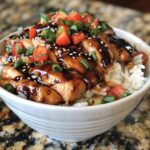
Hawaiian Style Teriyaki Chicken: The Ultimate Island-Inspired Recipe Guide
- Total Time: 50 mins
Description
Indulge in the tropical flavors of Hawaiian Style Teriyaki Chicken, a savory and sweet dish that brings a taste of the islands to your table. Perfectly grilled chicken marinated in a homemade teriyaki sauce with pineapple, bell peppers, and onions.
Ingredients
4 boneless, skinless chicken breasts
1 cup pineapple juice
1/2 cup soy sauce
1/4 cup brown sugar
2 cloves garlic, minced
1 teaspoon ginger, grated
1/2 teaspoon black pepper
1/2 cup pineapple chunks
1 red bell pepper, cut into chunks
1 green bell pepper, cut into chunks
1 onion, cut into chunks
2 tablespoons vegetable oil
Cooked rice, for serving
Instructions
In a bowl, whisk together pineapple juice, soy sauce, brown sugar, minced garlic, grated ginger, and black pepper to make the teriyaki marinade.
Place chicken breasts in a resealable plastic bag or shallow dish. Pour half of the marinade over the chicken, reserving the rest for later. Seal the bag or cover the dish and refrigerate for at least 30 minutes (or up to 4 hours) to marinate.
Heat vegetable oil in a large skillet or grill pan over medium-high heat. Remove chicken from marinade, letting excess drip off. Cook chicken for 6-7 minutes per side, or until fully cooked and internal temperature reaches 165°F (75°C). Remove from pan and let rest.
In the same skillet or pan, add pineapple chunks, bell peppers, and onion. Cook for 4-5 minutes, stirring occasionally, until vegetables are tender and lightly charred.
Pour reserved teriyaki marinade into the skillet with vegetables. Bring to a boil, then reduce heat and simmer for 2-3 minutes until slightly thickened.
Slice cooked chicken breasts and return them to the skillet, coating them with the teriyaki sauce and vegetables.
Serve Hawaiian Style Teriyaki Chicken over cooked rice, garnished with additional pineapple chunks if desired.
Notes
Hawaiian Style Teriyaki Chicken brings the taste of the islands to your dinner table with its sweet and savory teriyaki glaze and tropical pineapple accents. Enjoy this flavorful dish with family and friends!

